The exhibition «The Sea in the ABANCA and Afundación Art Collections» delves into these matters by means of artworks from both collections, highlighting the sea’s importance in the life and culture of human societies. The four sections making up the exhibition feature different perspectives, with the sea serving as the muse or source of inspiration for some creators, while being used by others as a work space or to exalt certain trades.
Section 1. Looking after, protecting and preserving the sea
Leiro – Recolectoras
This sculptural ensemble is called Recolectoras (Female Harvesters). It is made up of four large figures that pay tribute to the people affected by the Prestige catastrophe, while also serving to condemn that oil spill. The artist wants to recall those days that shocked people in Galicia, throughout Spain and worldwide. It could appear to be a nice group if it were not for the tragedy that is represents, that of the women that abandoned their everyday chores to clear up the oil bathing the Galician coastline. Being characteristic of Leiro´s sculpture in their monumentality and emphatic volumes, as well as in the abrupt way of working the wood –which he polychromes to endow the objects with life and personality– these figures, now converted into a symbol of the catastrophe, reflect different aspects: desolation, hope, denunciation and collective work.
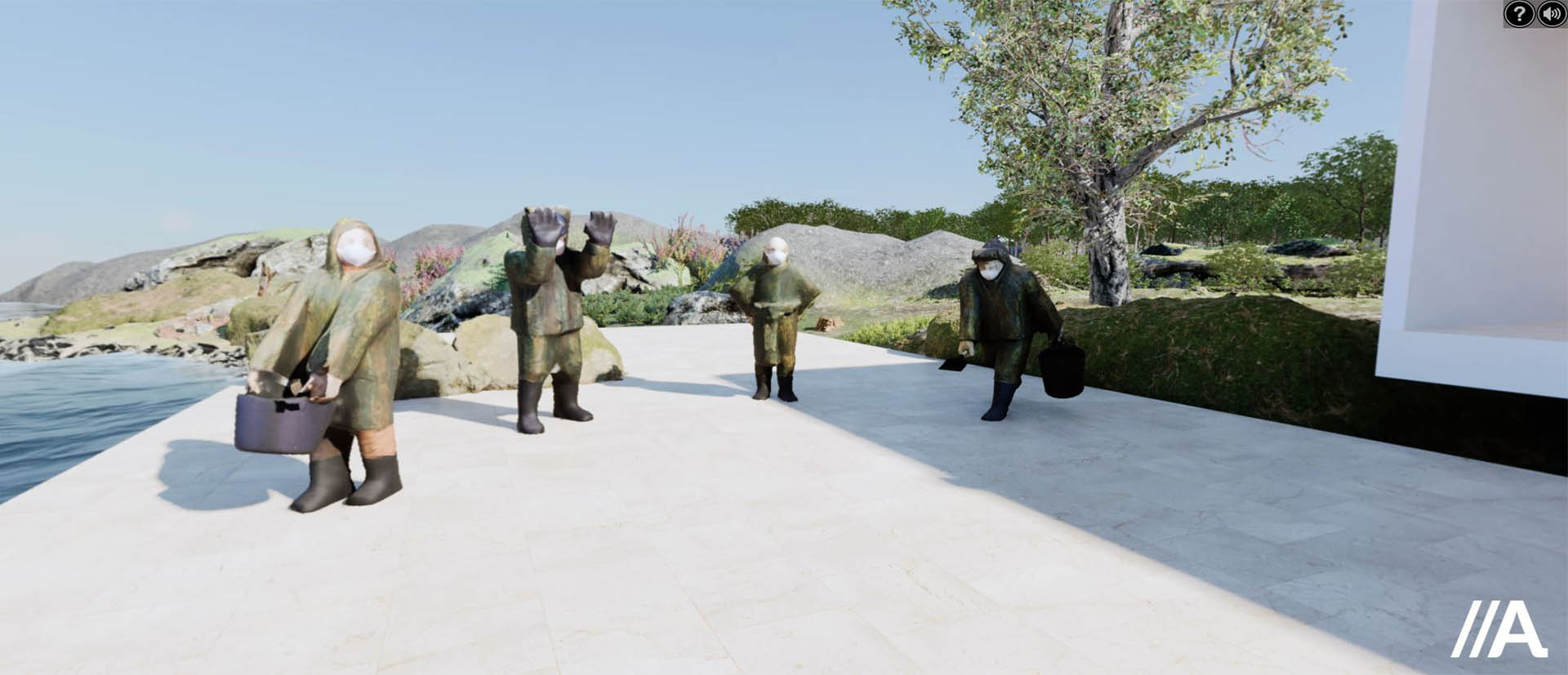
Correa Corredoira - Mariña gaivoteira
Correa Corredoira has been fond of the sea since childhood. His father and his grandfather, both born in Bouzas, were fishing skippers. He was born in A Coruña and moved in an environment that unfailingly led him towards blue as a space of freedom and life. His artistic career went from working the landscape starting from a specific physical space to creating it from within, from the imagination. We could say –with a certain respect for the term– that his seascapes are conceptualised scenes. Mariña gaivoteira belongs to a series dedicated to the sea, fully authenticated due to the rich variations that is developed therein. Among them all, this artwork stands out due to the vibrations and rhythms conveyed by these white brushstrokes generating life in freedom, to its capacity for arousing empathy with nature; it is like an invitation to live outside everything that is called virtual reality, with visual interplay between the sky, the sea, the seagulls and the fish that weave their own poetical storyline.
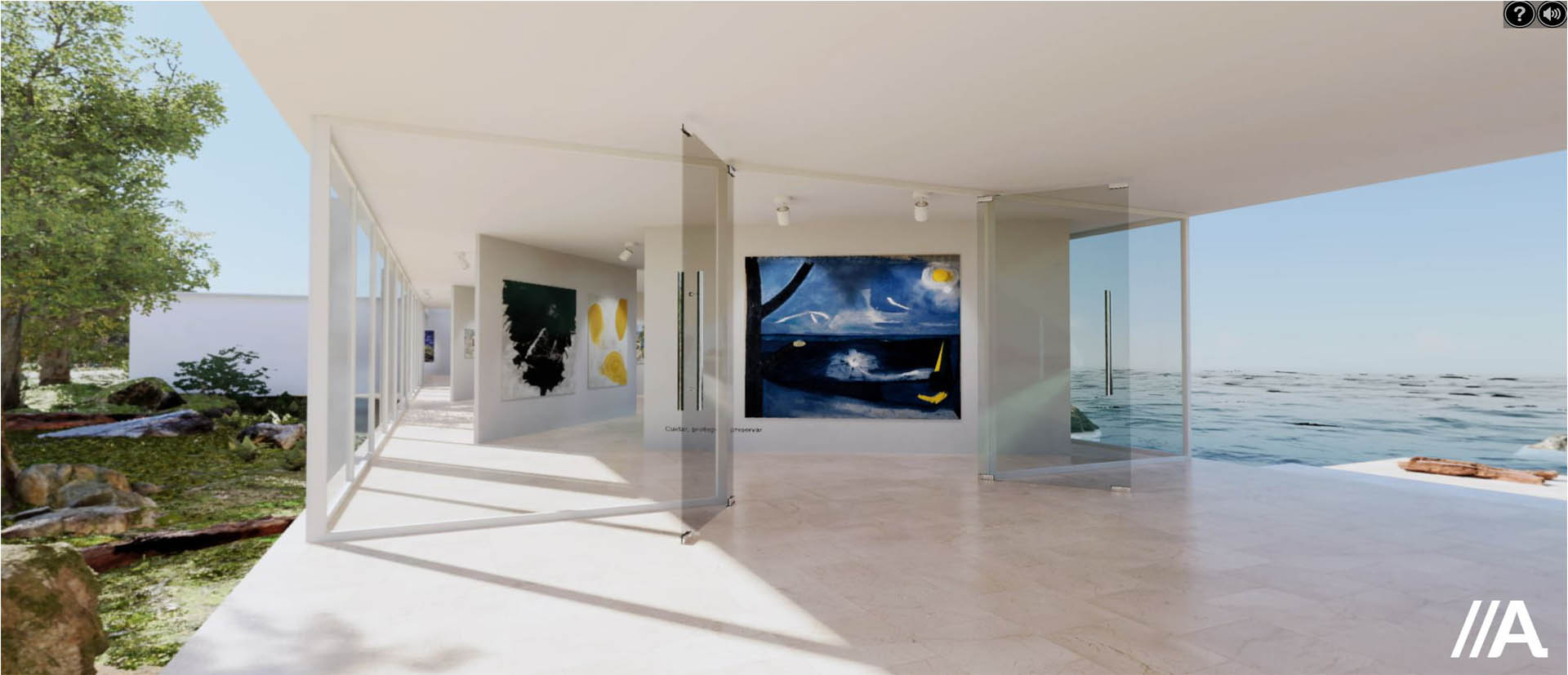
Pamen Pereira - Vista isométrica del continente antártico desde el mar de Weddell
Pamen Pereira´s work arises from a decanting of her own experiences. Travelling is a form of inspiration for her, something that endows her works with content and that also makes them very intimate. In this case, she made Vista isométrica del continente antártico desde el mar de Weddell after a three-month expedition to the Antarctic, which gave her a glimpse of the frozen continent´s majesty. Photographs, studies, drawings and all types of notes ended up becoming the Ice Blink series, whose works are inspired by what she experienced there.
This particular artwork depicts the beauty of fluctuating ice –rugged and indomitable– by means of a thick black line, which is reminiscent of the contour lines on a map. Interestingly, they are made with paraffin and drawn with smoke on white velvet.
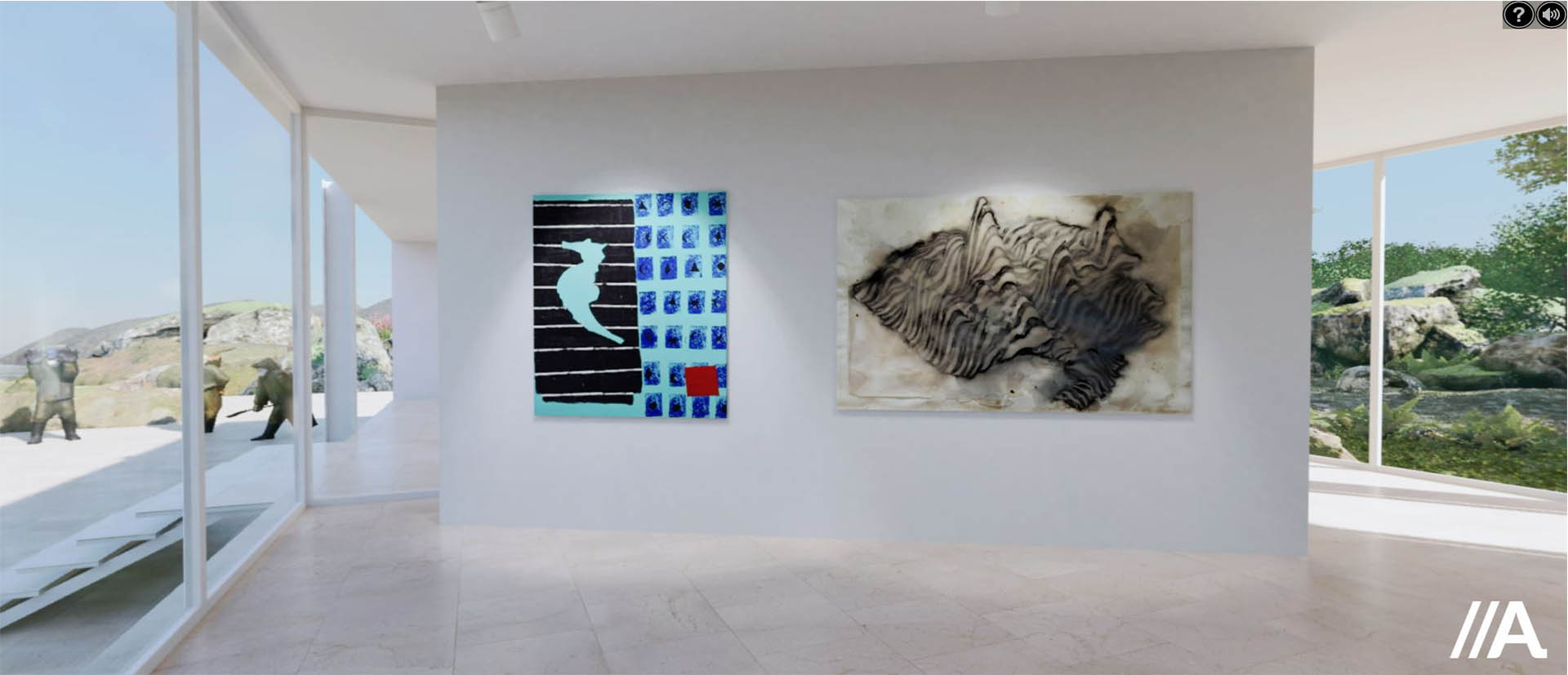
Section 2 – Professions related to the sea
Di Cavalcanti - Mulheres no cais
The main meeting point that encompasses all sea-related professions is the port. Mulheres no cais depicts a traditional, everyday scene, related to fishing, in which the figures are crowded together, suggesting the movement and the hustle and bustle of a city port.
Although it looks like a fairly unruly scene, we can find a certain order, a triangular composition that is mainly highlighted by the two women in the foreground, with the support of the figures in the corners, the chickens and cockerel on the left and the boy on the right. Completing the scene is a landscape in the background, where we can see part of the port, with details such as baskets with the day´s catch or nets and traps –characteristic of this kind of work– as well as other characters that enrich the artwork.
What mainly stands out is the painting’s colours –bluish and greenish tones– with different ranges used to generate movement and volume in the figures. The most striking ones are the shades depicting the woman in the foreground, designed to make her the protagonist of the scene. Not only does she fill the centre of the composition, but her posture also suggests movement; she is the character depicted with the most detail, which makes her the target of the spectator´s eyes. As we start looking at the other characters, they appear with less details and colours, tending towards a dark monochromatic range.
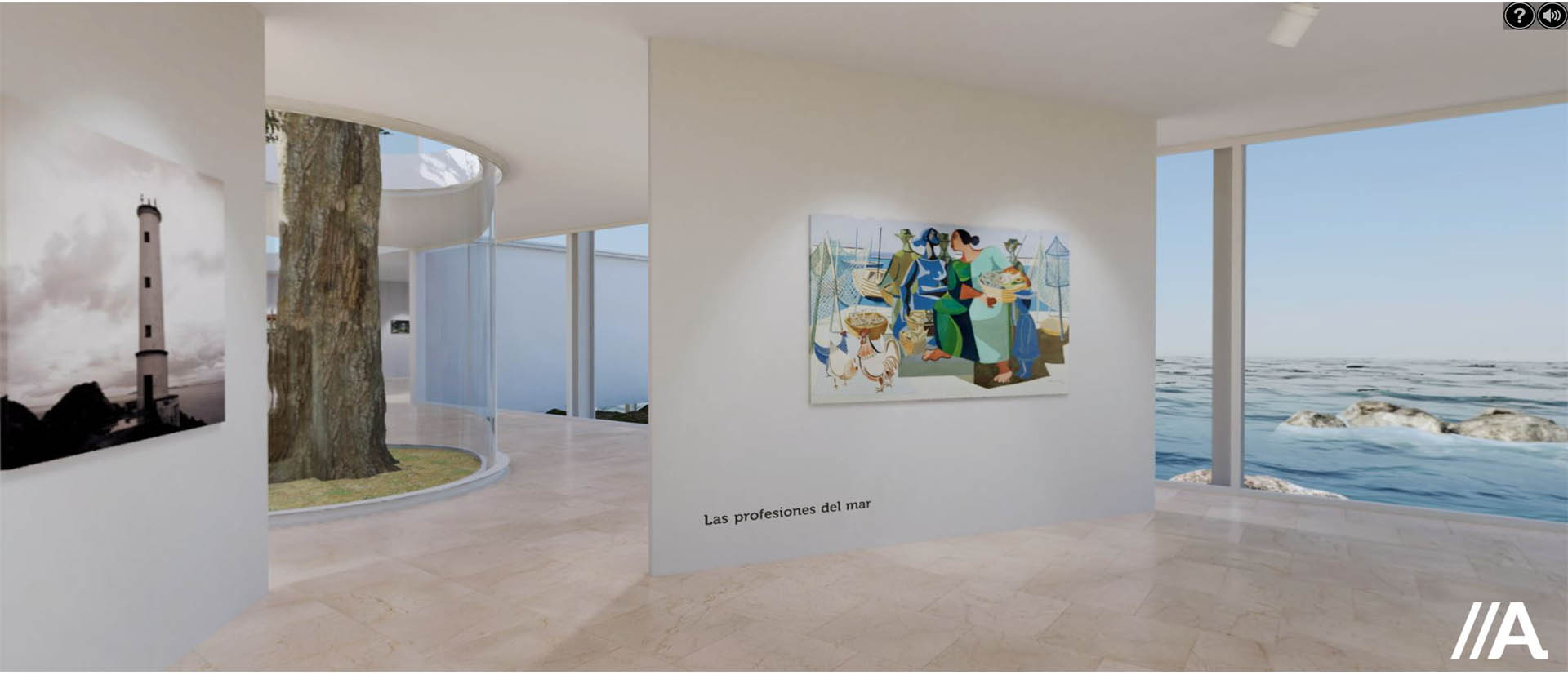
Granell - Cosedoras de redes
The next artwork belongs to Mario Granell. In it he presents us with this traditional fishing scene, which depicts one of the many trades linked to fishing, that of sewing nets. The composition is undoubtedly one of the painting’s most interesting elements. Divided into three planes, delimitating land, sea and sky, most of the elements are concentrated in the foreground, which depicts five women sewing nets arranged in a rhythmic fashion. The nets structure the composition, inviting us to follow them all over the painting with our eyes, starting in the foreground and winding among all the workers.
The colours, planes, are subject to the line of the drawing, producing an image with little volume that denotes the close link between his plastic work and poster design and mural painting. It is an artwork that, as a whole, conveys stillness, calm and silence, largely due to the workers themselves, who are absorbed in their labour.
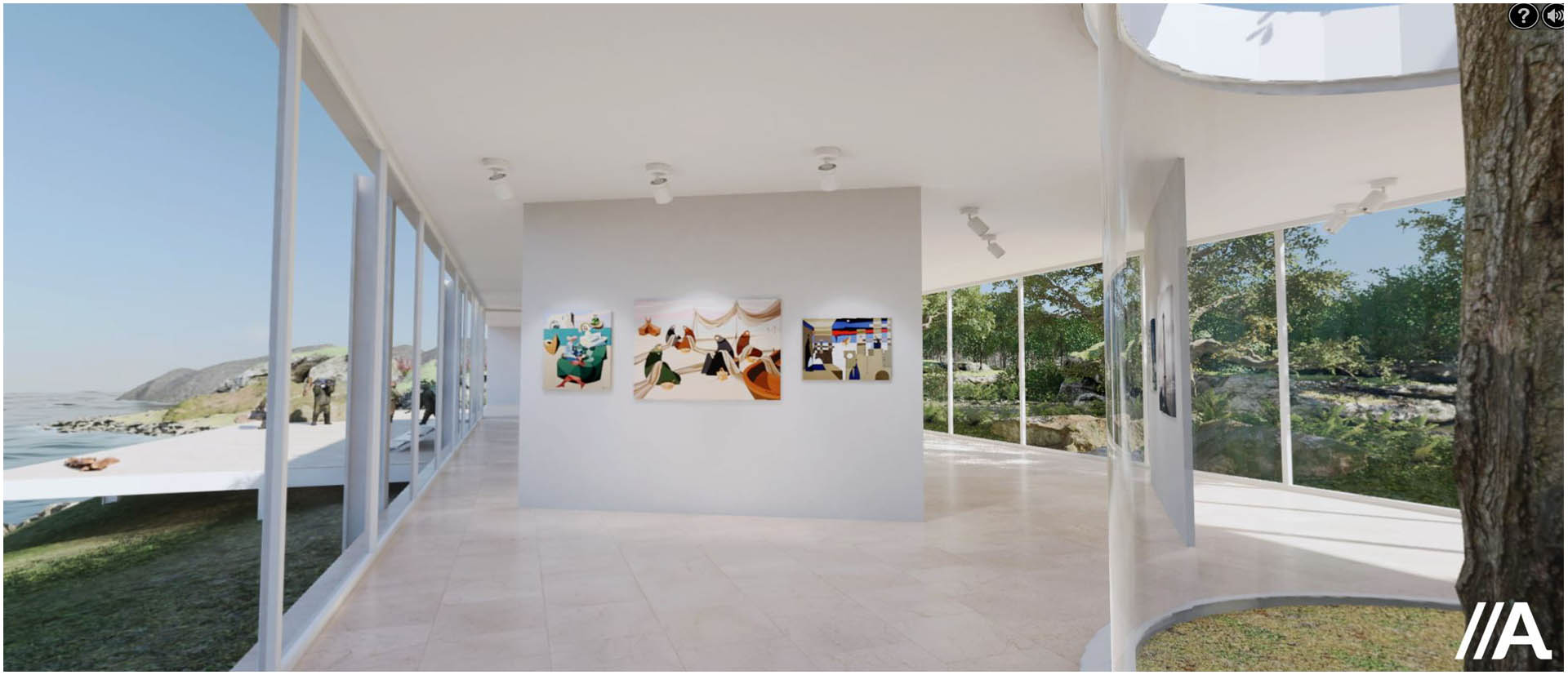
Andrés Pinal – Sin título
One trade that is not very common today is lighthouse keeper. A profession that, due to technological advances, is disappearing. Andrés Pinal´s photograph features a lighthouse that rises up in solitary fashion. It is a photograph linked to the other artistic expressions that interest him, with pictorial aesthetics and, above all, great sculptural force. His academic speciality in sculpture seems to acquire a different dimension, in view of this image in which the tower-shaped beacon dominates the surrounding space, organising it –erect and majestic– like a colossal structure.
Light is another key aspect of Andrés Pinal´s photographic work and, in this case, it dominates the scene discretely, from the background, but without yielding an inch of its prominence, defining planes and sensations.
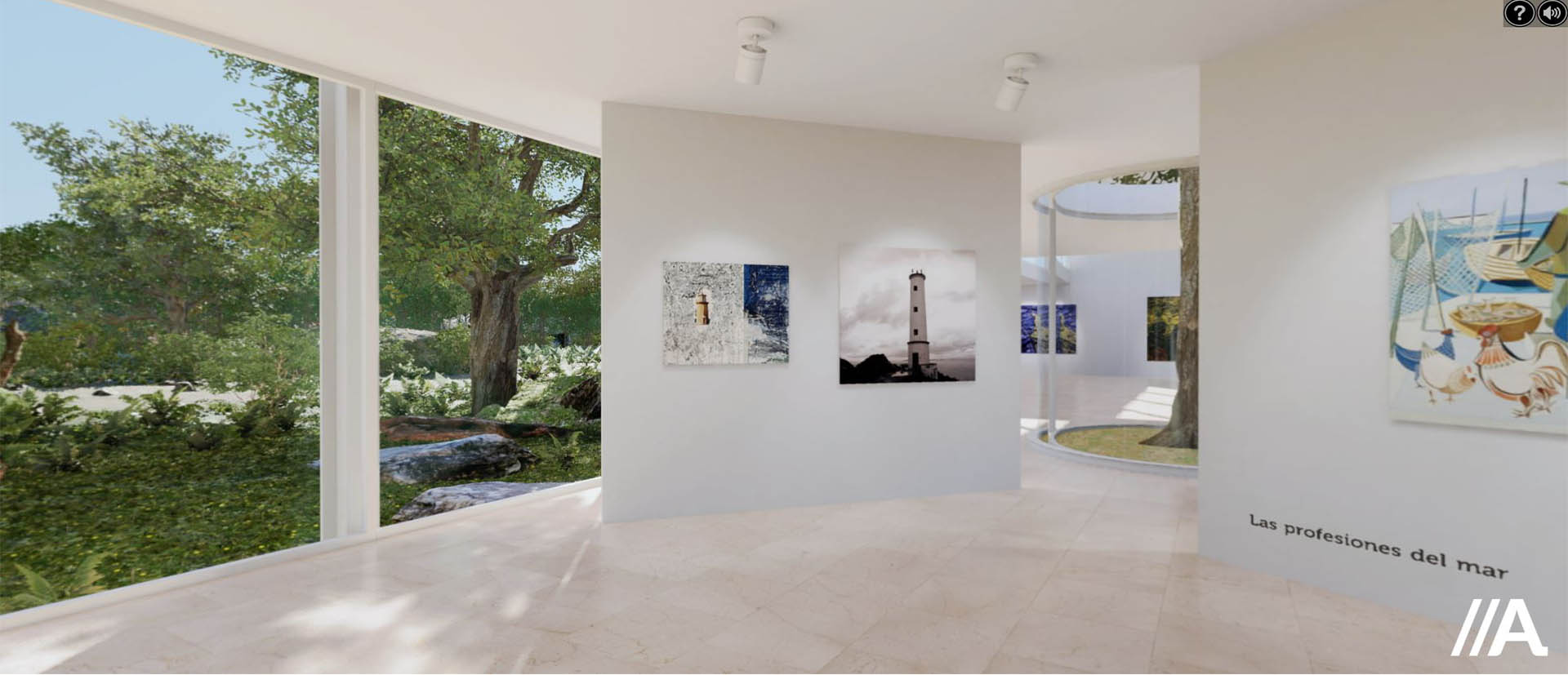
Section 3 – Nature. Coastline and seabed
Urbano Lugrís - 4 artworks
Urbano Lugrís, the representative of the marine world par excellence, opens this section. These four works are representative of his career, four small panels in which the artist recreates scenes featuring the sea, which is undoubtedly the protagonist, as well as literature, myths and legends related to it. One of the recurrent elements in this world are the underwater temples of legend, where marine life coexists with forgotten cities, evoking the myth of Atlantis. Solitary settlements alongside abysmal trenches, only visited by marine inhabitants, spaces of silent rhythms and a certain mysticism constitute the paradises of his interior experiences. Also very frequent are depictions of underwater creatures, as we can see in two of these artworks, in which fish and jellyfish are the absolute protagonists as they float in this environment.
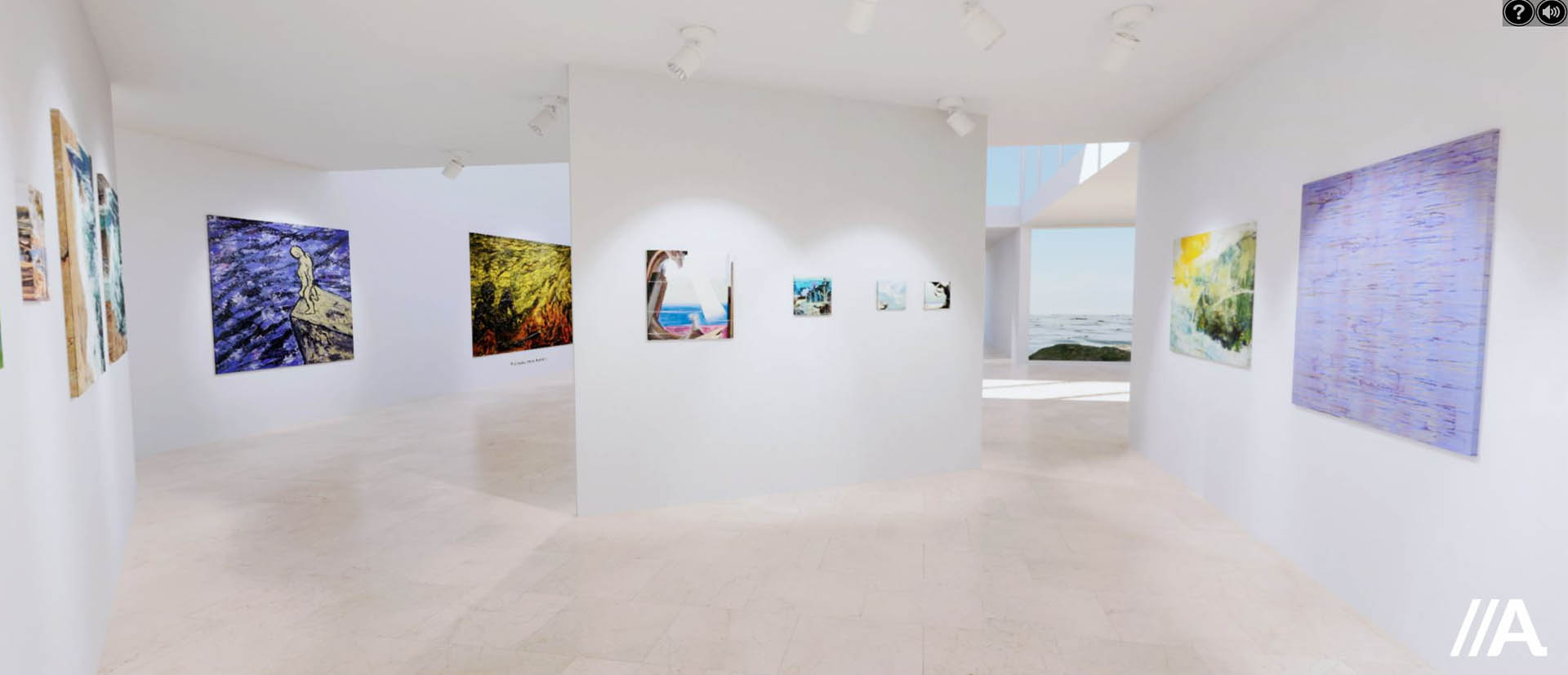
Germán Taibo, Costa de la Belle-Île – 2 artworks
Germán Taibo painted these artworks featuring the coast of Belle-Île-en-Mer(Brittany) years after returning from Paris, the city where he received his artistic education. He subsequently travelled around the country, looking for settings and atmospheres in which to develop his creative interests. Brittany and Provence served as his inspiration to paint nature scenes, in which the intensity of the light and colour stand out.
Undoubtedly, one of the greatest influences on his painting during this stay was impressionism. His artworks capture light with great skill and manage to convey an instant, simply that moment when the wave crashes against the rocks. It is an easel painting made outdoors, without any type of prior drawing or sketch, simply endeavouring to depict each moment.
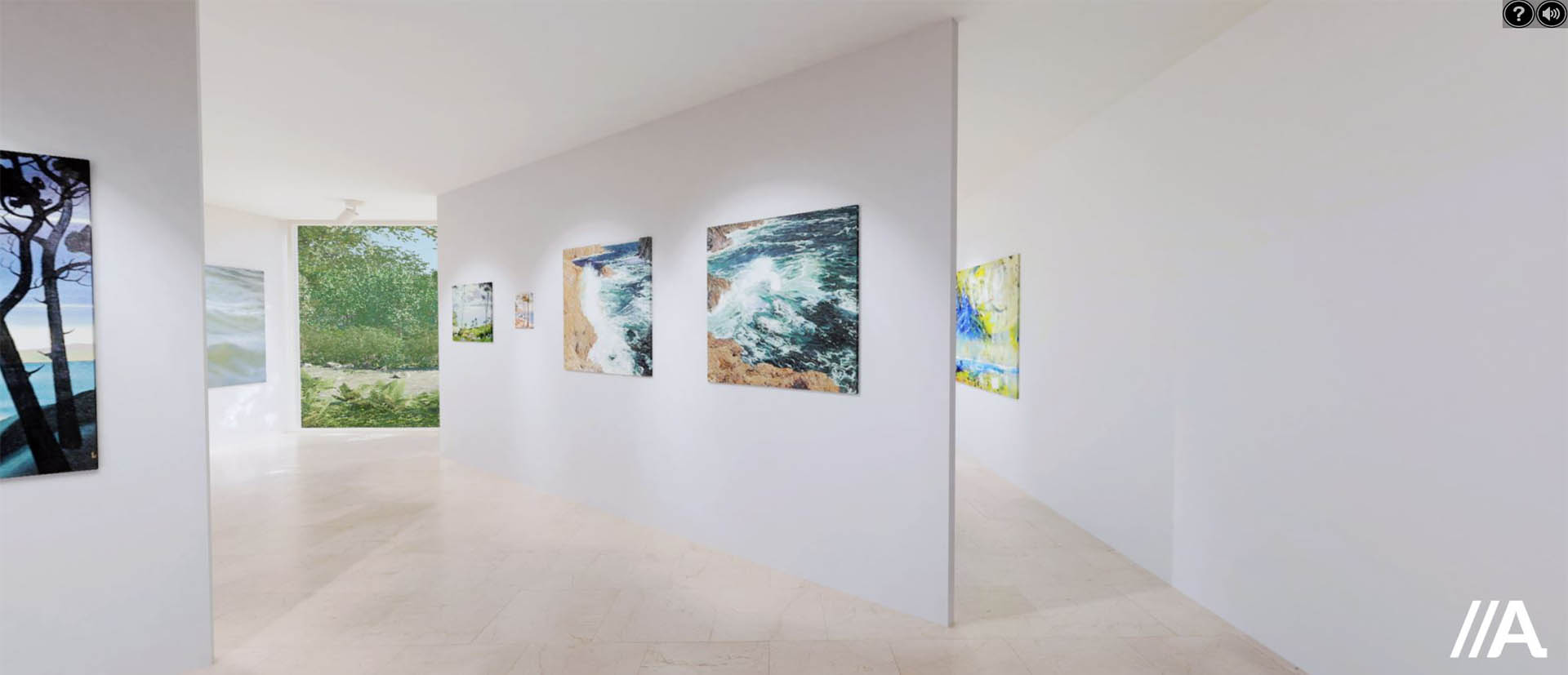
Tino Grandío, Marina
The landscape depicted in the following artwork is rather minimalist and full of force. Tino Grandío painted this Marina (seascape) using a fairly neutral palette, with a certain tendency towards darkness. The sky, land and sea seem to blend together, thereby avoiding great contrasts and immersing us into an atmosphere of stillness and silence, which bears the artist´s poetical stamp. The composition is orderly and simple, creating a sensation of depth thanks to the superimposition of planes, which gradually takes us into the sea, from a small beach until the view disappears into the horizon.
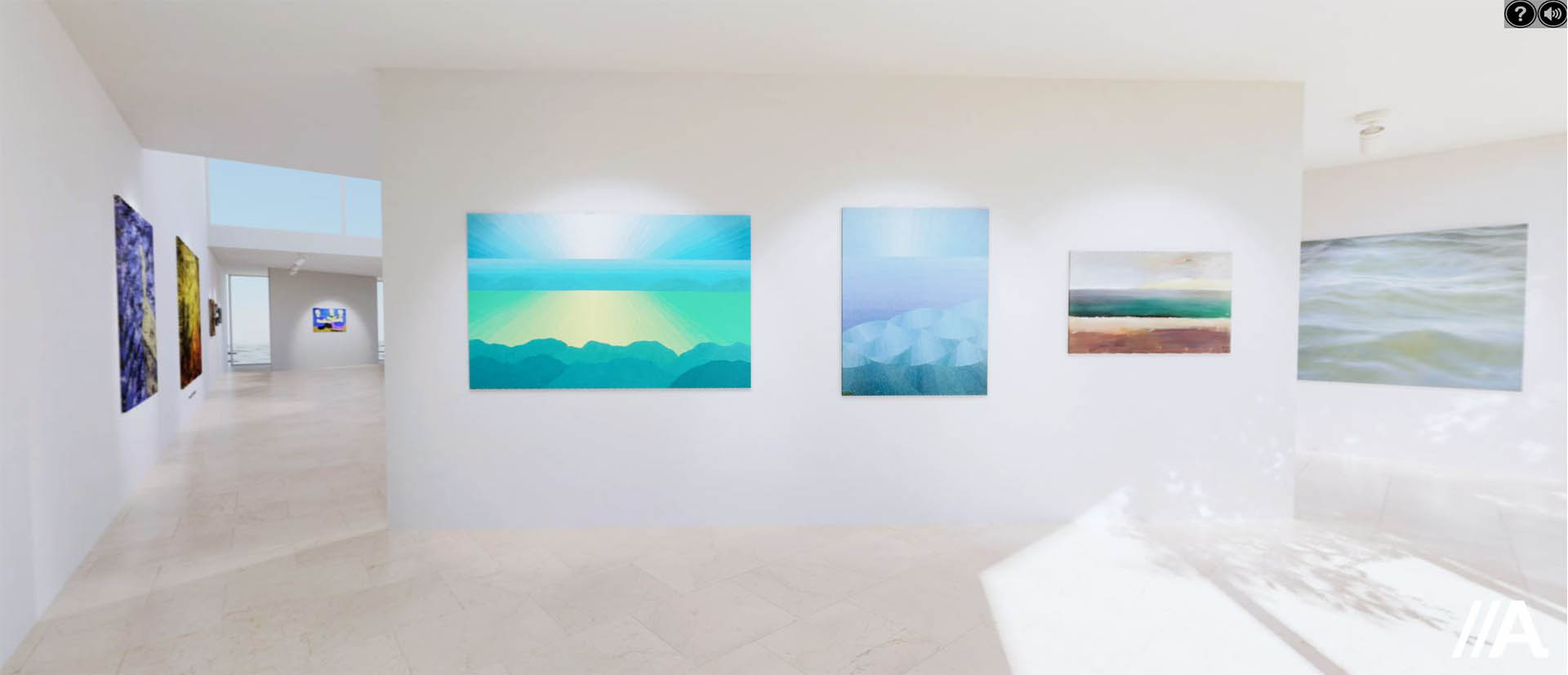
Section 4 – Presences, myths and legends
Maruja Mallo - Estrellas de mar
One of this section´s outstanding artworks is called Estrellas de mar (starfish), painted by one of Galicia´s most internationally renowned artists. We are, of course, speaking about Maruja Mallo, who depicts these three women turned into revolving shapes within a harmonious composition. The image tends towards geometrization and especially towards order, since it features a great compositional balance. Taken together, the rotating figures recreate a starfish, which indicates how everything, in the artist´s eyes, gravitates in harmony and reacts to the rhythms of nature.
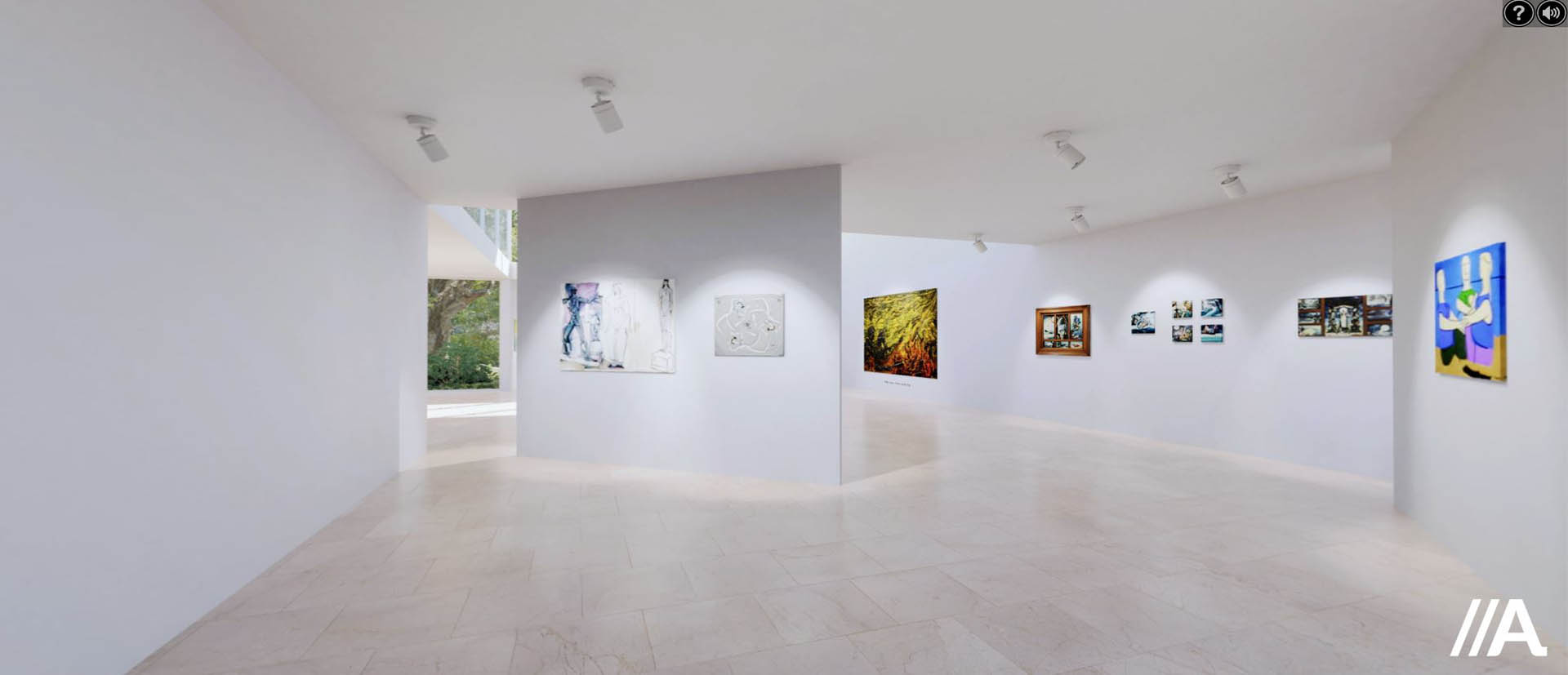
Sorolla. Después del baño. Asturias
Después del baño, Asturias takes us, as is usually the case in Joaquín Sorolla´s work, to the beach. However, in this case, it is not a beach in Valencia, his home region, but one in Asturias, where he spent part of the summer in 1903 along with his family. In this painting, his wife Clotilde serves as his model, posing on the rocks as she delicately dries her body after going for a swim. By then, the artist had abandoned the seafaring customs featured in his first artworks. There are no longer fishermen or boats; he has eliminated the social themes and turned his attention towards the immediate setting. It is based on his observation of nature, which enables him to brilliantly recreate light, which is undoubtedly the Valencia painter´s greatest talent. In this regard, this artwork reflects all of the artist´s technical virtues: rigorous drawing, free-flowing brushstroke and masterly use of colour, especially whites, as we can see in the fabric covering the bather in the painting.
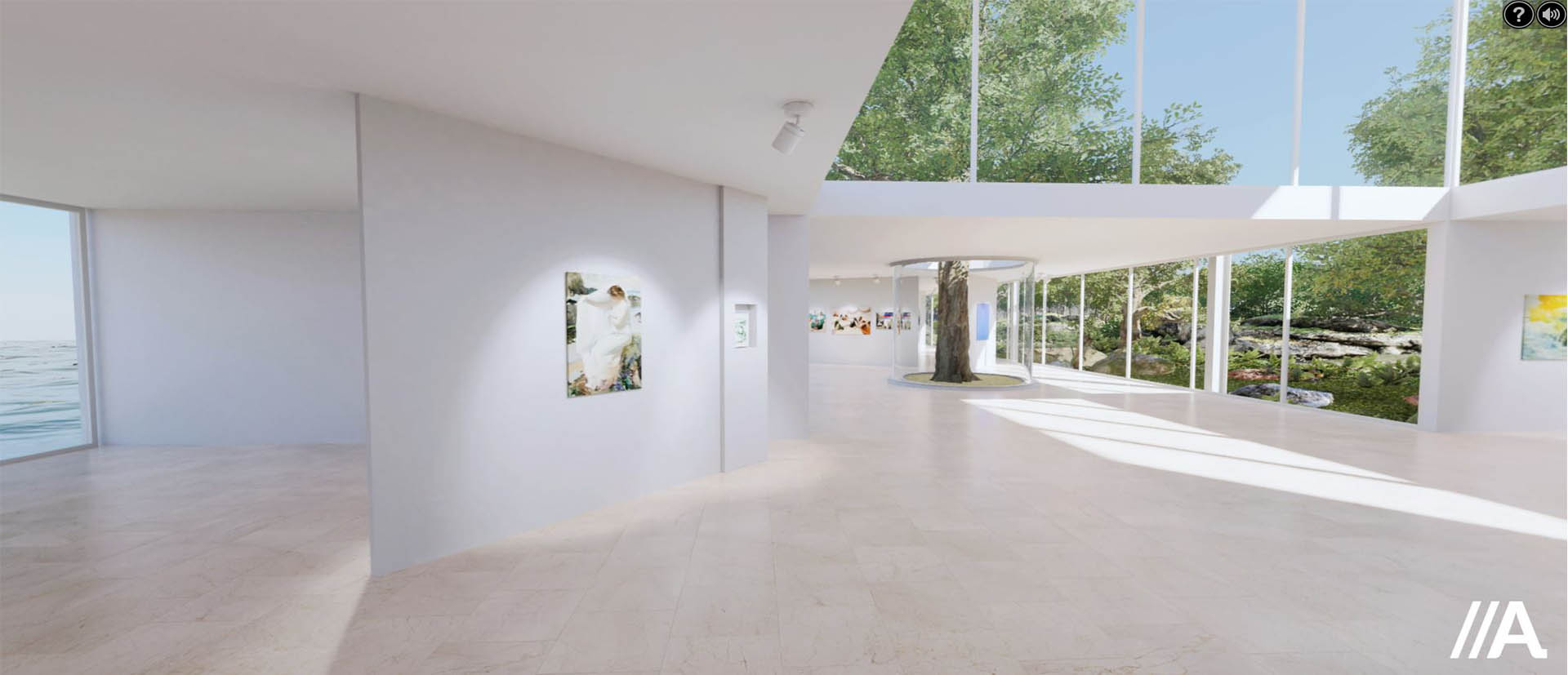
Barceló - Le feu sur la plage
The coast is also a refuge for us, as we see in Le feu sur la plage, a canvas by the highly renowned painter from the Balearic Islands, Miquel Barceló. His work was originally abstract, with a strong presence of concept art, but he soon turned towards figuration and a high degree of neo-expressionism, as reflected in this painting. Jackson Pollock’s influence is noticeable in the material density, with large gobs of paint applied using the impasto technique, which gives the painting body and texture. The painter thus expresses his art not only by means of colour but also by form. The reclining figure is stoking a nearby fire that fills the scene, which is otherwise dark and marked by black to greenish shades shining brightly. This creates a very powerful expressive contrast, even though the artwork is characterised by its simple shapes. The flames light up the man’s body, while the sand and sea blend together to create a series of wavy lines that direct the composition’s rhythm beyond the canvas, creating a forced perspective.
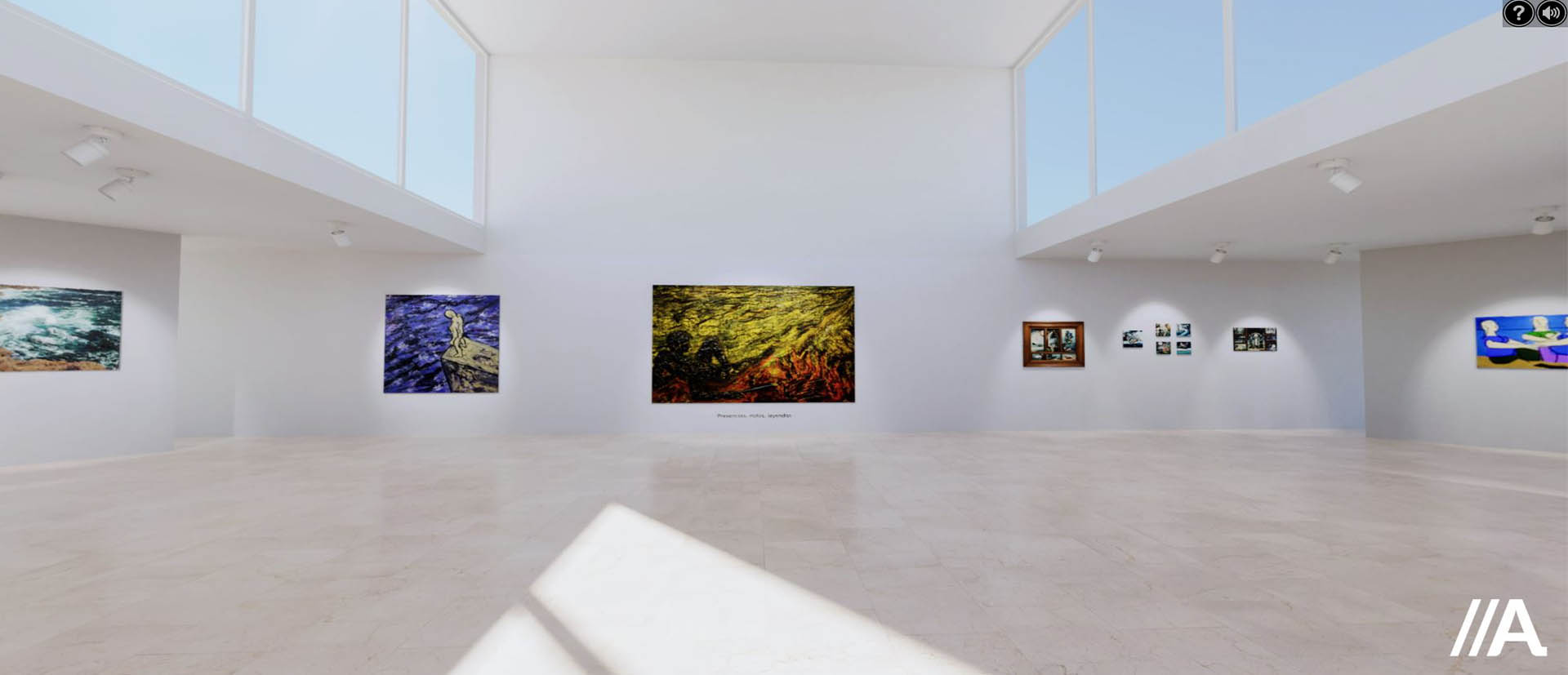
LIST OF ARTISTS
Abelenda Zapata, Manuel
Barceló, Miquel
Basso, Darío
Cáccamo, Berta
Correa Corredoira, Javier
Di Cavalcanti, Emiliano
Grandío, Tino
Granell, Mario
Huete, Anxel
Lago Barreiro, Lino
Lamas, Menchu
Leiro, Francisco
Lodeiro, Xosé Telmo
Lugrís, Urbano
Mallo, Maruja
Martiño, Xurxo
Murado, Antonio
Pereira, Pamen
Pinal, Andrés
Pulido, Antón
Rego, Montse
Seoane, Luis
Sobral, Antón
Sorolla, Joaquín
Taibo, German
Trigo, Ramón
Vilariño, Manuel